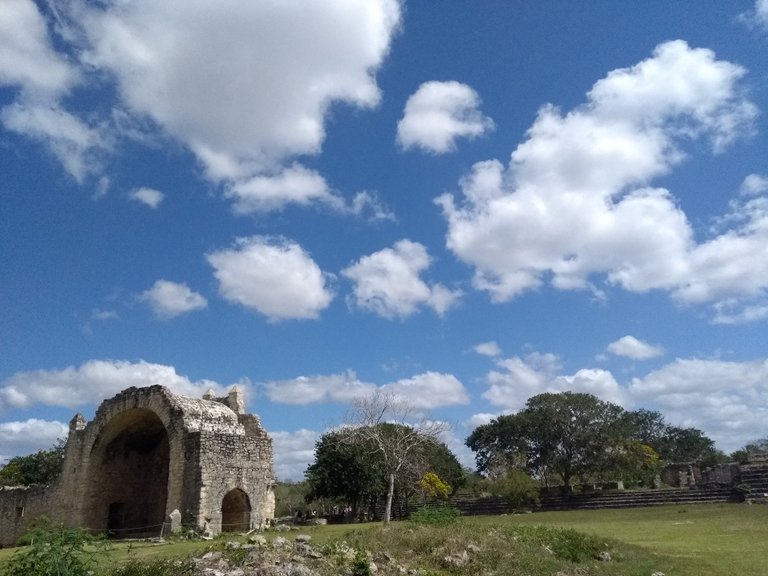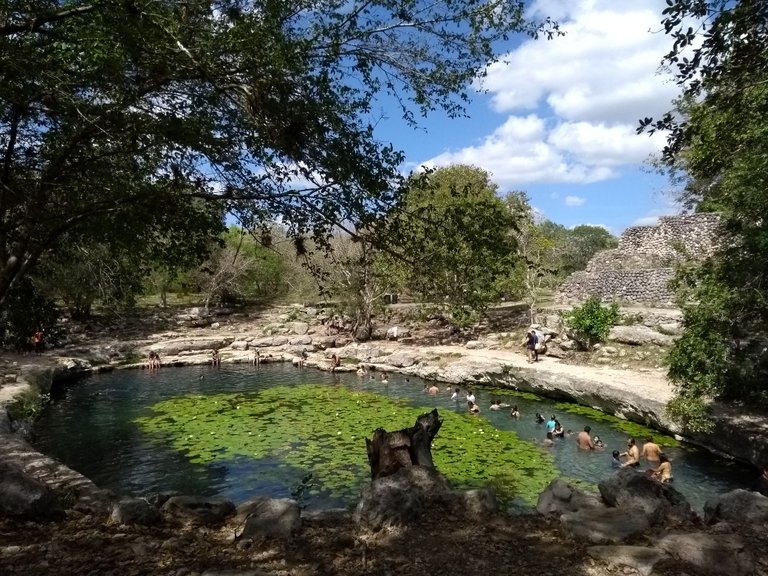Español
Dzibilchaltún es un sitio arqueológico Maya que se ubica a 16 km. al norte de Mérida. Dzibilchaltún quiere decir “el lugar donde hay escritura sobre las piedras planas,” que se refiere a las muchas piedras memoriales encontradas en el sitio.
Se cree que la ciudad empezo a existir desde 500 ac. Tiene un área de 19 kilómetros cuadrados, con aproximadamente 8400 estructuras en el enclave redondo. Es posible que contó con una población de 40,000 habitantes, que le hace una de las ciudades más grandes de Mesoamérica.
El Templo llamado de las Siete Muñecas tambien es conocido como Templo del Sol. Este segundo nombre puede originarse del fenómeno que ocurre dos veces al año, en los equinoccios de primavera y otoño, cuando el sol amaneciente es visible por una ventana y sale por otra. El templo está conectado al resto del sitio por un sacbé, o “camino blanco,” nombrado así porque originalmente fueron cubiertos de roca caliza blanca, construidos encima de piedras y escombro.
También podemos encontrar el cenote Xlacah, que significa “pueblo viejo,” es uno de los pocos cenotes de Yucatán sin techo. Es uno de los más grandes y profundos, llegando a una profundidad de 43 metros. Han encontrado muchos restos arqueológicos en el cenote.
English
Dzibilchaltún is a Mayan archaeological site that is located 16 km. north of Merida. Dzibilchaltún means "the place where there is writing on the flat stones," which refers to the many memorial stones found on the site.
It is believed that the city began to exist from 500 BC. It has an area of 19 square kilometers, with approximately 8400 structures in the round enclave. It is possible that it had a population of 40,000 inhabitants, which makes it one of the largest cities in Mesoamerica.
The Temple called of the Seven Dolls is also known as the Temple of the Sun. This second name can be originated from the phenomenon that occurs twice a year, in the equinoxes of spring and autumn, when the dawning sun is visible through a window and comes out through another . The temple is connected to the rest of the site by a sacbé, or "white road," named because they were originally covered with white limestone, built on top of rocks and rubble.
We can also find the cenote Xlacah, which means "old town," is one of the few cenotes of Yucatán without a roof. It is one of the largest and deepest, reaching a depth of 43 meters. They have found many archaeological remains in the cenote.







Smartphone Motorola G5
buen reportaje,me gusta mucho la cultura maya,gracias
gracias
Hermosas fotos. Las panoramas largas a mi me encantan. Ese edificio con los arcos ¿que es? Me parece más moderno que las otras ruinas. Lugares así son fascinantes. Me gustaría estar allí con un tripode por un día completo :-)
Muy bien hecho. ¡Saludos!
Es capilla construida a inicios de la conquista española, la conquista de los mayas por los españoles se dice duro 11 años